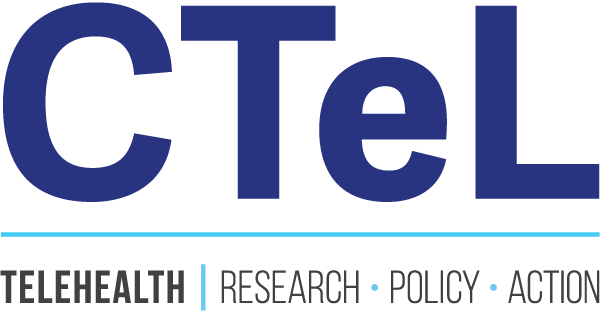Reimbursement
Medicare
While Congress writes the laws affecting telehealth and Medicare, CMS works within that statutory guideline to decide which services it will reimburse. There are limitations CMS cannot overturn without congressional action—specifically, geographic restrictions and restrictions on originating sites. That is why much of the telehealth-related legislation you see in Congress focuses on removing these limitations, usually for a select group of patients as we saw with acute stroke and end-stage renal disease patients in 2019.
CMS adds codes once a year in one of two ways. The most common way CPT codes are added is when CMS decides that the code is like something they are already reimbursing for. CMS also allows the public to submit their own requests for reimbursement codes. To do this, providers must include evidence that the services provided via telehealth are just as good as services provided in person. There has been no official guidance on what specific evidence should be included.
Effective January 1, 2019, CMS added two telehealth-specific codes they will reimburse, both related to prolonged preventive services after a procedure. CMS also added codes related to remote physiological monitoring for chronic care management. Though this sounds like a telehealth service, it is not telehealth for the purposes of coding. The best way to describe this would be “technology-enabled care”. Because of the differences in how they are being defined, these services are not subject to the same restrictions as telehealth services.
Additionally, some CPT codes officially titled Brief Communication Technology-Based Services have been added.
These include:
Brief Communication Technology-Based Service – virtual check-ins
Remote Evaluation of Pre-Recorded Patient Information – asynchronous video and images
Interprofessional Internet Consultation – peer-to-peer consultations
In spring 2020, the federal government enacted a patchwork of temporary emergency measures to ensure access to care during the coronavirus pandemic. These temporary changes have been compiled thoroughly by numerous sources, including at this link.
Throughout 2020, members of the telehealth community and Congress lobbied to make many of those changes permanent. CTeL stakeholders can access information on those bills in the password protected portion of this site.
Download the current list of Medicare Telehealth Services List.
Medicaid
Medicaid is a medical assistance program for low-income patients funded jointly at the federal and state level. The vast majority of Medicaid policy is developed by states, though within federal guidelines—telehealth services must meet the federal Medicaid standards of efficiency, economy, and quality of care.
Because of this state-level freedom, each state has a different Medicaid program and a different way of reimbursing telehealth.
States can determine:
Whether or not to cover telemedicine
What types of telemedicine to cover
Where in the state it can be covered
How it is provided/covered
What types of telemedicine practitioners/providers may be covered/reimbursed, as long as such practitioners/providers are “recognized” and qualified according to Medicaid statute/regulation
How much to reimburse for telemedicine services, as long as such payments do not exceed Federal Upper Limits. (medicaid.gov)
To learn more about Medicaid reimbursement of digital health, contact our staff at info@ctel.org to learn more about our 50 state Medicaid reimbursement report.As with the federal government, state governments enacted temporary changes affecting telehealth to ensure access to care amid the coronavirus pandemic. Some states have taken steps to make those changes permanent after the Public Health Emergency has passed.
Evaluation of Telehealth Services that are Clinically Appropriate for Reimbursement in the US Medicaid Population: Mixed Methods Study
Private-Payer
There are no federal laws governing private insurance coverage of telehealth services, but at least 39 states and the District of Columbia have laws about reimbursement and payment parity. While not all states have laws requiring private insurers to reimburse for telehealth services, some states require that insurance reimburse telehealth services at the same rate as in-person services. Most states only require that the services be offered.
Coverage Parity
Requires payors to cover a service via telehealth if it is also covered in-person and can be delivered remotely while meeting the standard of care.
Coding and Payment
Payment Parity
Requires payors to reimburse for telehealth at the same rate as the equivalent in-person service
Coding and reimbursement for telehealth services can be complex and challenging to navigate. With ever changing legislative parameters, it can be confusing to know which codes to use when and for which service. Below is a highlight of common CPT codes used in telehealth reimbursement:
Telehealth Visit
Telephone Evaluation and Management Service
Remote Monitoring
Download the PDF Telehealth Toolkit.
Online Digital Visits
Additional information telehealth and remote monitoring specific CPT and HCPCS codes are available on the AMA website, or simply reach out to CTeL for specific information related to CPT and HCPCS codes. Our reimbursement and claims denial working group is also a trusted resource to our members, providing valuable insight and real-life application of each of these scenarios as well as process of advocating for additional CPT codes.





